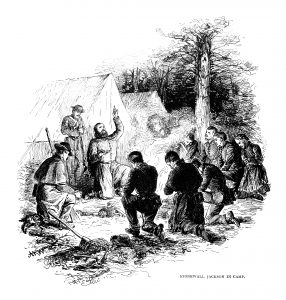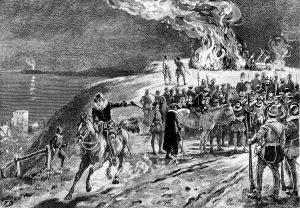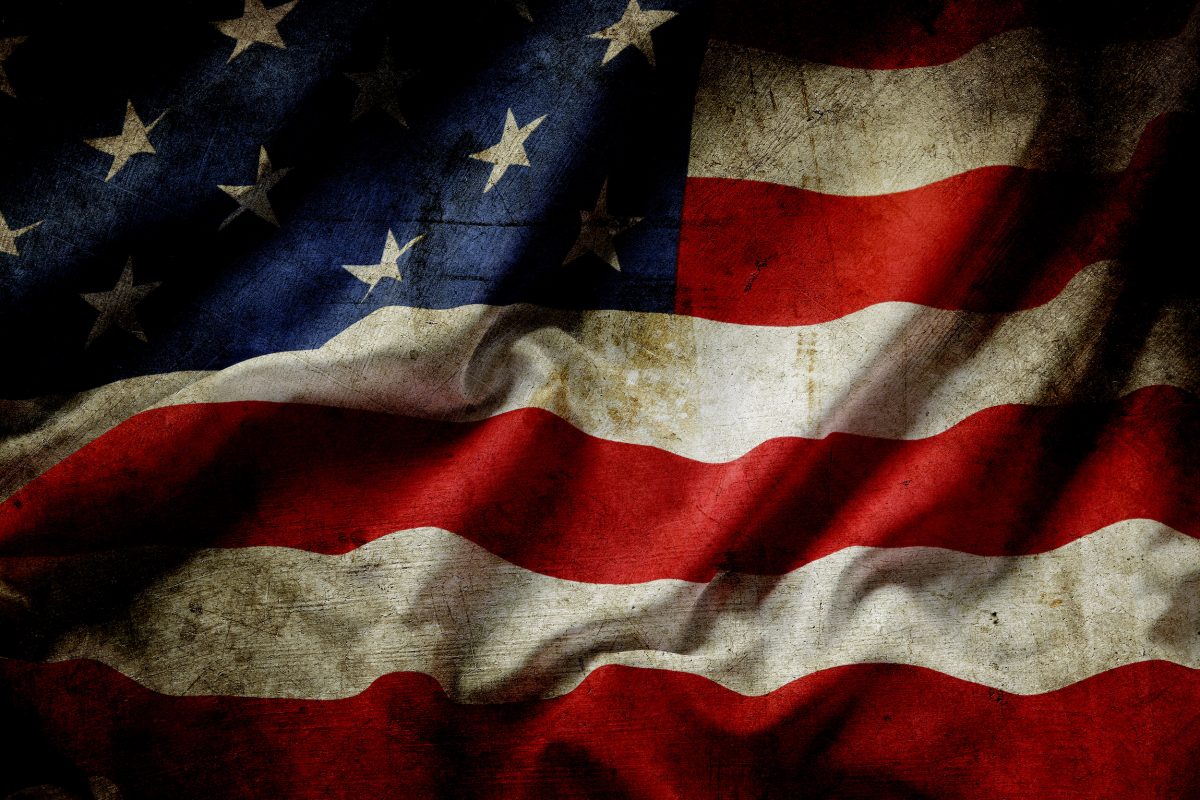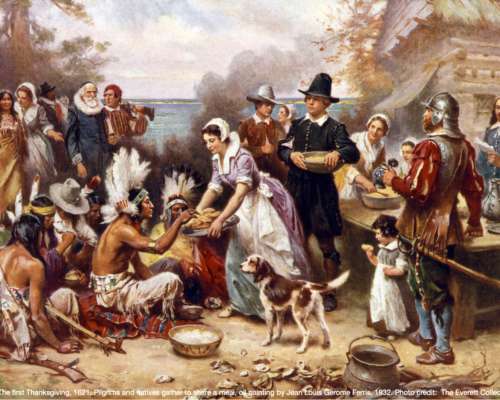
Where did the domain name watch-fire come from? The domain name watch-fire comes from the “Battle Hymn of the Republic” which was written by Julia Ward Howe on the eve of the Civil War. It is specifically taken from the verse:
“I have seen him in the watch-fires of a hundred circling camps
They have builded him an altar in the evening dews and damps
I have read his righteous sentence by the dim and flaring lamps
His truth is marching on.”
Watch fires were military contrivances by which soldiers would keep watch for enemy movements. It was on such a watch-fire that this domain is based on. Closely related were illuminating fires (now accomplished through the use of flares) whereby the movements of enemy soldiers could be seen in the dark.
Historical examples of watch fires

Here is a Civil War scene where soldiers gathered around a watch-fire similar to the scene in the movie Glory where the black-American soldiers of the 54th Regiment steeled themselves for battle the following day.
Many of us have encountered the lines from HW Longfellow’s “Paul Revere’s Ride” which reads:
“He said to his friend, “If the British march
By land or sea from the town to-night,
Hang a lantern aloft in the belfry arch
Of the North Church tower as a signal light, —
One, if by land, and two, if by sea;
And I on the opposite shore will be,
Ready to ride and spread the alarm
Through every Middlesex village and farm,
For the country folk to be up and to arm.”
The term “watch fire” is thought by some to have originated in the late eighteenth century, but it is much older than that. For example, in 1588 the Spanish armada reached the English Channel, but the English already had watch fires on their shores to warn people up the coast of the ships arrival.
Breaking the siege of Vienna preserves Christianity in Europe
Then again, when in 1683 as the army of Islam besieged Vienna, “shingles were torn from the city roofs and burnt as flares on the battlements to illuminate any Turkish activity in the ditches” (Southern 240.) There is a wonderful movie on this occasion and what the capture of the city might have meant for European Christianity. A trailer for the movie which is available on Amazon Prime can be found here. Here, the watch-fire secured the future of the faith since the victory at Vienna kept Christianity from being eradicated in Europe under the sword of Islam.

Much, much earlier in 212 B.C., “The Romans also used fires to help them out of danger when the troops of Fulvius Flaccus were almost lured into a trap by Hannibal. In the darkness they thought they were heavily outnumbered, but when they lit fires and torches they could see how few the enemy were and successfully fought their way out of the trap” (Southern 240.)
The watch-fire of today consists of flares that are fired into the air and drift back to earth on a parachute. Dozens of there were used everynight while I was at Danang to warn against sappers creeping up the the wire.
Jesus, Himself talks about the need to watch for His second coming. He uses the parable of the ten virgins to make his point.
I will be doing an article in the future on the topic “watching” in the Scriptures, answering the who, what, why, where, when and how.

Citations
Southern, P. “Signals versus Illumination on Roman Frontiers.” Britannia, vol. 21, 1990, pp. 233–242. JSTOR, www.jstor.org/stable/526297. Accessed 17 Mar. 2021.



